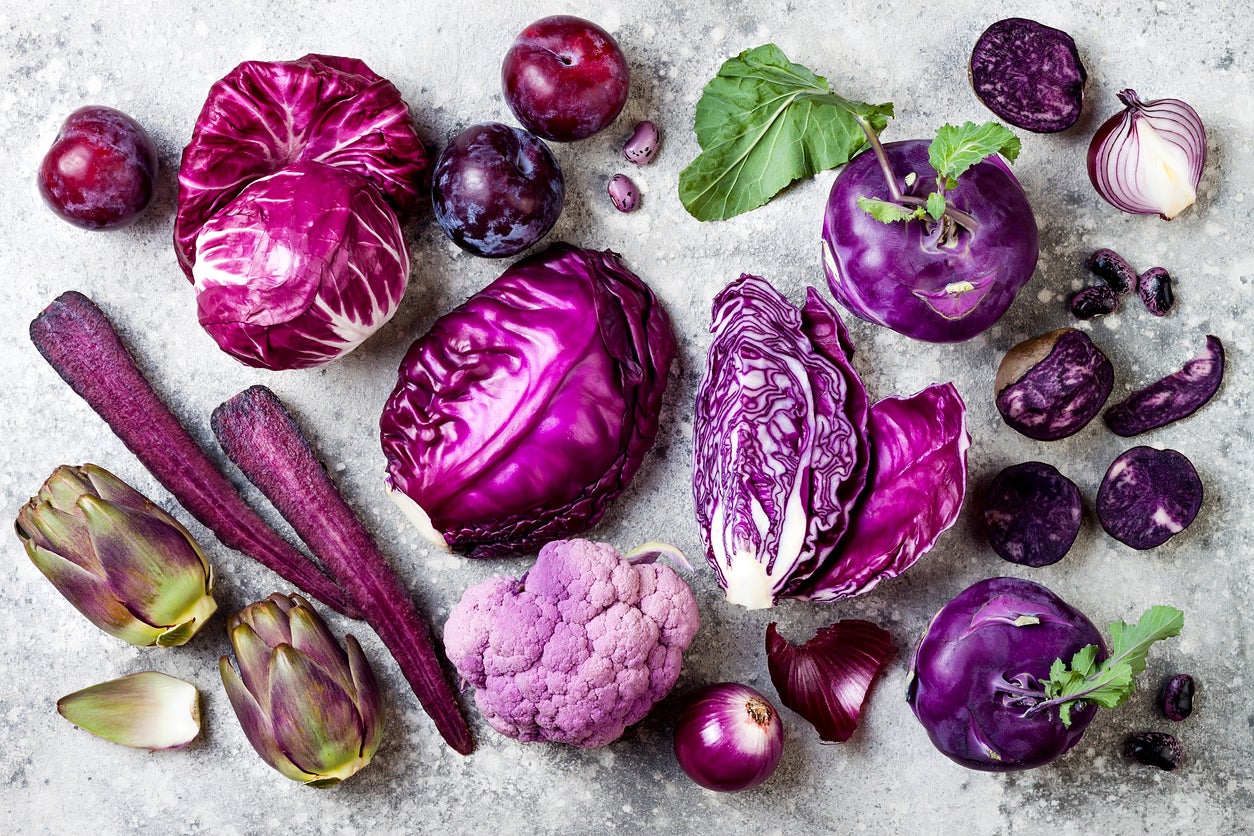
For years, nutritionists have been persistent about the importance of consuming brightly colored vegetables. One reason is that it keeps you eating a variety of fruits and veggies. Another being that those bright colored foods are rich in antioxidants. Purple fruits and vegetables are no exception, and there are plenty of healthy purple foods to choose from. Keep reading to find out about the nutrients in purple produce and suggestions for purple foods for health.
Nutrients in Purple Produce
At one time purple was said to be a dignified color reserved only for those with royal blood. Luckily, times have changed, and now anyone can wear purple or eat purple fruits and vegetables. So, what exactly makes up healthy purple foods?
The nutrients in purple produce vary depending on the particular fruit or vegetable, however, one thing they all have in common is that they are rich in anthocyanins. Anthocyanins are what give the produce that rich purple hue. They are powerful antioxidants that help boost the immune system, reduce inflammation, and help to prevent cancer.
Data from National Health and Nutrition Examination Study found that adults who consume more purple fruits and vegetables have a significantly reduced risk for both high blood pressure and low HDL (“good cholesterol”) and are also less likely to become overweight.
Purple Foods for Health
Anthocyanins are more prevalent in berries, therefore, people are encouraged to eat more berries – in this case, blackberries and blueberries. Keep in mind healthy purple foods such as berries aren’t the only option available when considering purple foods for health.
Other fruits and vegetables that contain these antioxidants include purple varieties of:
Interestingly, it might seem that beets are missing from the list. That’s because they are. The reason for this is because they do not contain anthocyanins. However, they do contain betalain pigments which replace anthocyanins in some plants and are also healthy antioxidants, so eat your beets for added measure!
Sign up for the Gardening Know How newsletter today and receive a free copy of our e-book "How to Grow Delicious Tomatoes".

Amy Grant has been gardening for 30 years and writing for 15. A professional chef and caterer, Amy's area of expertise is culinary gardening.
